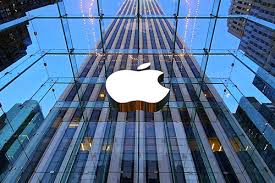Why Apple is NOT a repair company

Most customers who own an Apple macbook or idevice assume that because apple manufactures said device then they are able to also fix and repair any issue they may encounter with said device.
"Apple is a innovative sales company, not a repair company"
Lets first state what many may forget. Apple is a innovative sales company, not a repair company. The primary business model for Apple inc. is to design, manufacture and create new solutions for its end users with a consistent flow to its product line.
The Apple Store is just that, a store to showcase it's products and new deisgns. "In 2015, there were 463 Apple stores worldwide. Since the opening of the first Apple store in the United States in 2001, the number of Apple stores around the world has boomed, surpassing 200 stores after 2007 and still rising."

Apple does employ what's called "Genius Bars" in all stores, but often times the employees are not fully versed in repairs or informed of all the current issues with every device. The "Technicians" working at the genius bars are often times middle men for sales or gate keepers for the many polices apple instills to try and discourage repairs for a more profitable option of selling the customer a new device. The genius bar employees often act as support staff for its many customers to help and inform them of better usage habbits.
Going to a genius bar you will have to first have to schedule an appointment typically a few days out. As a customer if you choose to get an issue looked at they will first use the elgibile or ineligible chart to determine what category you fall into for a swap. This will often lead to you not getting your issue fixed. All apple devices have what's called a LDI sticker (Liquid Damage Indicator) which is made of litmus paper; used to indicate the acidity or alkalinity of a substance. Blue litmus paper turns red under acid conditions, and red litmus paper turns blue under alkaline conditions. This may mean that if you are trying to get your phone replaced or "fixed" and you got one spill of liquid or brought your phone with you running and got enough moisture to trip the sensor you may be denied for any service even if they are completly unrelated.
Want to get your cracked screen replaced but have a small ding or dent in the frame you may have to shell out a lot more for what OOW swap which may cost between $200-$300 for something that should cost less than $100.

These strict guidelines are often very frustrating and hard to work with. Most devices after 6-8 months of time will surely develop dings, dents and scratches from daily use.
Take for example the well known and documented iPhone 7 Series Audio IC Fault which shows itself in millions of phones. Apple was "aware" of the issue for a short period of time and began to offer replacements but only if the device was "eligible" according to their guidelines. Unbeknownst to the users they were simply swapping a defective iPhone 7 for another defective iPhone 7. As of July 2018 they stopped offering this option.
See more info about our repair service for this here: https://www.microsolderingrepairs.com/blog/iphone7audioic
Another well known and documented issue is the iPhone 6 and 6 Plus devices that had touch problems after about a year of usage. This was later confirmed to be caused by a weak frame and bending the motherboard causing pads under a "Touch IC" chip U2402 (aka Meson)
Once apple identified the issue with your phone they may replace it with another, but they certainly are not going back and re-designing the phone to make it better and stronger. This would usually mean the device you got replaced may end up with the same problem in a few months time.
Technicians at Wires Computing offer this repair for anyone regardless of time or condition of the device. As part of the repair process we re-enforce the chip with a metal plate and small jumper wires to ensure this problem will not rear its ugly head. Apple does not have the logistics setup to repair each and every device.
"Apple does not have the logistics setup to repair each and every device."
See more info about our repair service for this here: https://www.microsolderingrepairs.com/blog/iphone6plustouchdisease
Have an iMac or MacBook that needs repair? Well you better be ready to commit to a long drawn out process. Often times local stores will not have every part for all devices, meaning it will be sent out to a "service center" which can take weeks. This will often result in them replacing parts for no need or sending a unit in similar condition. often times without retaining the users data.
Take for example Snazzy Labs trying to get his iMac VESA stand fixed, which resulted in many days of back and forth, much confusion and empty promises.
Louis Rossman also took some time to compete with a genius bar and see if an Independant third party repair can offer better, proper repair services.
Apple will often try to claim that any third party repairs will void any warranty provided by them. As of 1975 the Magnuson–Moss Warranty Act was created to fix problems as a result of manufacturers using disclaimers on warranties in an unfair or misleading manner. Warrantors cannot require that only branded parts be used with the product in order to retain the warranty. This is commonly referred to as the "tie-in sales" provisions and is frequently mentioned in the context of third-party computer parts, such as memory and hard drives.
In conclusion, apple is a sales company. They focus on sales and hitting record profit numbers with every product release. They do support their customer base, but not in the way you may think. Often times jumping through hoops and in the end getting the same broken, flawed product as before.
